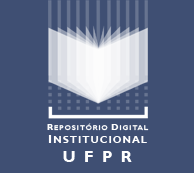Making and making use of a baseline: botanical research and the legacy of Chico Mendes
DOI:
https://doi.org/10.5380/dma.v48i0.58800Palavras-chave:
Amazonia, botanical research, floristics, resource management, taxonomyResumo
The vision and charisma of Chico Mendes made Acre a destination for many people fascinated and inspired by the great socio-environmental experiments he was proposing; his murder only increased that interest. The extractivist movement engendered by Chico Mendes, with a potentially strong role for basic research, was the primary reason that The New York Botanical Garden (NYBG) committed scientists and resources in order to study the flora of Acre and Southwestern (SW) Amazonia. At the outset of our collaborative agreement with the Universidade Federal do Acre (UFAC)[Federal University of Acre], Acre was botanically one of the least-known parts of Amazonia. Thirty years later, it has come to be one of the best-known parts, due in great part to the First Catalogue of the Flora of Acre, Brazil, which contributed with the first ten percent of the checklist to the flora of all Brazil. More importantly, we were able to add original data to arguments for the making of new protected areas in Acre. In these process, we established Acre as a point of reference for botanical knowledge about Southwestern Amazonia. The NYBG/UFAC partnership was an early participant in the MAP (Madre de Dios-Acre-Pando) consortium and helped designate priorities portions of SW Amazonia to conservation. Our botanical research in this region has emphasized potential applications to resource management. Most recently, our efforts have focused on reforming forest management and monitoring by continuing to build on our baseline of knowledge of the flora, proposing better protocols for sampling and collection in forest inventories, offering training courses to the certification of new generations of “master woodsmen”, and developing tools and resources for tree identification. Our capacity-building efforts now focus primarily on communities situated in or close by protected areas, treating them as participants and collaborators in forest inventory and monitoring. Making good use of traditional knowledge and focusing on forest communities as full participants and partners in projects devoted to inventory, management, monitoring and conservation of forests throughout Amazonia, we are doing our small part to honor the legacy of Chico Mendes.
Downloads
Publicado
Como Citar
Edição
Seção
Licença
Os Direitos Autorais sobre trabalhos publicados nesta revista são do autor, com direitos de primeira publicação para a revista. O conteúdo dos trabalhos publicados é de inteira responsabilidade dos autores. A DMA é um periódico de acesso aberto (open access), e adota a licença Creative Commons Atribuição 4.0 Não Adaptada (CC-BY), desde janeiro de 2023. Portanto, ao serem publicados por esta Revista, os artigos são de livre uso para compartilhar (copiar e redistribuir o material em qualquer suporte ou formato para qualquer fim, mesmo que comercial) e adaptar (remixar, transformar, e criar a partir do material para qualquer fim, mesmo que comercial). É preciso dar o crédito apropriado, prover um link para a licença e indicar se mudanças foram feitas.
Os conteúdos publicados pela DMA do v. 53 de 2020 ao v. 60 de 2022 são protegidos pela licença Creative Commons Atribuição – Não Comercial – Sem Derivações 4.0 Internacional.
A DMA é uma revista de acesso aberto desde a sua criação, entretanto, do v.1 de 2000 ao v. 52 de 2019, o periódico não adotava uma licença Creative Commons e, portanto, o tipo de licença não é indicado na página inicial dos artigos.




